 VANCOUVER, Wash.-Geologist John S. Pallister was flying over Mount St. Helens when he spotted something unusual.Pallister, a private pilot who works in the hazards section of the U.S. Geological Survey's Cascades Volcano Observatory, noticed a line of steam coming from a zipper-like fracture line atop the growing lava dome in the crater of the southwest Washington volcano."It was interesting enough to take some pictures," Pallister told The Columbian newspaper of the Sunday flight.After landing, he learned that a 2.9-magnitude earthquake had registered on seismographs at the observatory in Vancouver. That was followed by a small tremor that lasted nearly an hour and a half, an unusually long period, punctuated by a second quake of 2.7 magnitude-all in the same period in which he saw the steam.Along with the shake, rattle and roll, tiltmeters registered alternate ground swelling and deflation near the lava dome, which has been growing in the crater since the fall of 2004.All are typical signs that magma, superheated gases or both are moving through conduits beneath St. Helens, which blew its top with devastating force on May 18, 1980, leveling 230 square miles of forest and killing 57 people.The last noteworthy tremor at the volcano lasted 55 minutes on Oct. 2, 2004, and was much more powerful, registering on seismometers from Bend, Ore., to Bellingham and causing a hasty evacuation of the Johnston Ridge Observatory five miles north of the crater.No evacuations have been ordered this time-seismic activity had slowed down since the episode Sunday and the likelihood of a major eruption seemed low. Hydrologist Carolyn Driedger said Wednesday that scientists were taking advantage of some clear weather to check on the equipment that monitors the volcano 24 hours a day and make some minor repairs.Cynthia A. Gardner, scientist in charge of the volcano observatory, said that scientists had quit venturing into the crater. The equipment checks are being done on the flanks of the crater, outside the area where the new dome is growing."We're just being cautious. It's not that we're anticipating any activity," Gardner said Wednesday.She said the precise cause of the recent activity was not entirely clear."The settling of the growing lava dome might have caused some fracturing and might have changed the subsurface openings so that water was either being squeezed out of openings or opening new areas," Gardner said Tuesday.The last precise measurements, drawn from images in July, indicated the latest eruptive phase has pumped 123 million cubic yards of material into the crater. The rate has slowed considerably, but the episode Sunday showed that could change at any time, Pallister said."Rumors of an early end of this eruption are once again shown not to be the case," he said. "It's still got some surprises."
VANCOUVER, Wash.-Geologist John S. Pallister was flying over Mount St. Helens when he spotted something unusual.Pallister, a private pilot who works in the hazards section of the U.S. Geological Survey's Cascades Volcano Observatory, noticed a line of steam coming from a zipper-like fracture line atop the growing lava dome in the crater of the southwest Washington volcano."It was interesting enough to take some pictures," Pallister told The Columbian newspaper of the Sunday flight.After landing, he learned that a 2.9-magnitude earthquake had registered on seismographs at the observatory in Vancouver. That was followed by a small tremor that lasted nearly an hour and a half, an unusually long period, punctuated by a second quake of 2.7 magnitude-all in the same period in which he saw the steam.Along with the shake, rattle and roll, tiltmeters registered alternate ground swelling and deflation near the lava dome, which has been growing in the crater since the fall of 2004.All are typical signs that magma, superheated gases or both are moving through conduits beneath St. Helens, which blew its top with devastating force on May 18, 1980, leveling 230 square miles of forest and killing 57 people.The last noteworthy tremor at the volcano lasted 55 minutes on Oct. 2, 2004, and was much more powerful, registering on seismometers from Bend, Ore., to Bellingham and causing a hasty evacuation of the Johnston Ridge Observatory five miles north of the crater.No evacuations have been ordered this time-seismic activity had slowed down since the episode Sunday and the likelihood of a major eruption seemed low. Hydrologist Carolyn Driedger said Wednesday that scientists were taking advantage of some clear weather to check on the equipment that monitors the volcano 24 hours a day and make some minor repairs.Cynthia A. Gardner, scientist in charge of the volcano observatory, said that scientists had quit venturing into the crater. The equipment checks are being done on the flanks of the crater, outside the area where the new dome is growing."We're just being cautious. It's not that we're anticipating any activity," Gardner said Wednesday.She said the precise cause of the recent activity was not entirely clear."The settling of the growing lava dome might have caused some fracturing and might have changed the subsurface openings so that water was either being squeezed out of openings or opening new areas," Gardner said Tuesday.The last precise measurements, drawn from images in July, indicated the latest eruptive phase has pumped 123 million cubic yards of material into the crater. The rate has slowed considerably, but the episode Sunday showed that could change at any time, Pallister said."Rumors of an early end of this eruption are once again shown not to be the case," he said. "It's still got some surprises."As in the days of Noah......

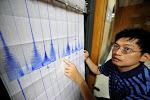

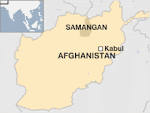






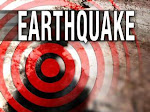
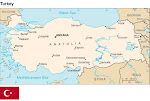
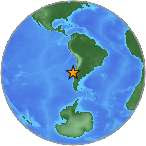




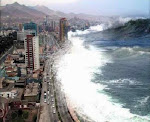

.jpg)


.bmp)
No comments:
Post a Comment